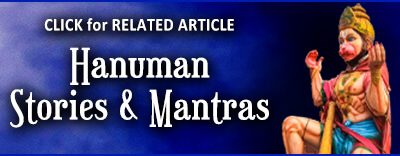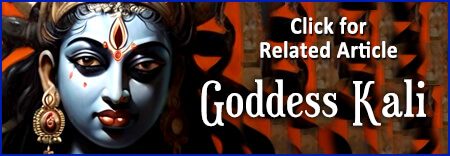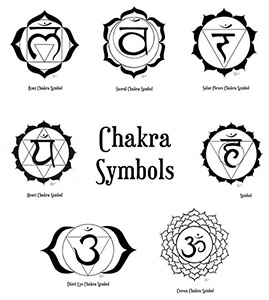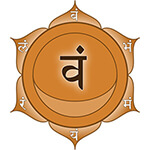
Chakra Mantras
Chakra mantras are one of the most direct ways to work with spiritual energy in the body. For example, the bija seed syllables are fundamental sounds that connect to each of the seven chakras. Other approaches include creating affirmations for the chakras (spoken or sung), singing chants to deities associated with a specific chakra (see Chakra Gods and Goddesses), or using the practice of sacred toning (see Chakra Vowel Sounds and Sacred Toning).
Table of Contents
Share this page with a friend!
Chakra Mantras and Transformation
Chakras are centers for energy transformation. That energy is physical, emotional and intellectual. The emotions in particular are powerful transformers. In fact, the word “emotions” can be decoded as “energy in motion.” The key is to transform this extraordinary energy rather than to deny or suppress emotions and feelings.
Chakra Energy Transformation
Emotional and psychological energy can be transformed in a number of ways. For example, mantras are a tool that can transform chakra energy. This is my own favorite practice for balancing and healing the chakras. Other practices that may be helpful in working with the energy of the chakras include exercise, yoga, meditation, journaling, and so forth.
Finding Your Approach
There are differences in the recommendations from source to source for these approaches. You may want to find more than one approach that works for your temperament and personality. Research and personal experience will help you to determine which tools are most helpful for you. This article is focused on chakra mantras.
Related Article: Chakra Sounds
Bija Seed Syllables for the Chakras
Simple chakra mantras can be created using the bija seed syllables for each chakra. These syllables reflect the essence of each chakra and help to clear and strengthen the associated energy. In order from the base to the crown, these are LAM, VAM, RAM, YAM, HAM, OM and AUM (also ANG or AH).
Using Seed Syllables in Mantras
Creating a mantra with these sounds helps to soften their effect and make the sounds easier to repeat over an extended period of time such as ten minutes per day. These mantras can be a single sound or word or a longer formula, usually in Sanskrit. Learn more about One Word Mantras.
Related Article: One Word Mantras
Meaning of OM
Typically, mantras begin with the sound OM. The Sanskrit word OM is familiar to most people. OM is the sound of the universe, the sound from which all other sounds are formed. After OM, chakra mantras contain the seed syllable for the intended chakra. Finally, chakra mantras close with the word “Namaha.” This word is usually translated as “I bow,” “I give reverence” or “I honor.”
Watch nearly 300 videos on our YouTube channel!
Root Chakra Mantras
Using the above formula for creating mantras for the chakras (“OM” followed by the chakra seed syllable and ending with “Namaha”), a simple mantra for the root chakra would be “OM LAM Namaha.” The seed syllable for the root chakra LAM is pronounced “luhm”.
The Energy of the “L” Consonant
The “L” sound is related to water energy. This brings about a stabilizing and holding effect, sometimes viewed as holding back negativity sent by others. In other words, this is a protective sound. When “LAM” is taken as a whole, the sound is closer to the earth element, appropriate for the root chakra.
Root Chakra Mantra Meaning
This mantra can be translated as, “I give honor to the energy of the root chakra.” An example of this mantra can be found in the video above. This is a simple but powerful mantra that should be approached with caution. Some suggest starting with five minutes or less a day when practicing chants that use the chakra seed syllables. Learn more about the root chakra in the article Root Chakra Meaning. Or explore many facets of chakra mantras in Chakra Sounds & Seed Syllables.
More Root Chakra Mantras
Another way to use mantras for the root chakra is to focus on the associated Hindu deities. Perhaps the most significant aspect of relating to a chakra god or goddess is the sense of a personal relationship. Giving devotion to a specific form of the deity can reinforce those characteristics within ourselves.
Root Chakra Mantra to Ganesha
The Hindu god Ganesha (also known as Ganesh or Ganapati) is associated with the root chakra. The feminine energy or goddess of the root chakra is known as Shakti or Kundalini. The gods Brahma, Indra, and Ganesha are associated with the root chakra. The feminine energy or goddess of the root chakra is known as Shakti or Kundalini.
Ganesha as the Remover of Obstacles
Ganesha symbolism gives a glimpse into the stories and spiritual meaning of this well-known Hindu god. Accordingly, many of the symbols associated with Ganesha relate to his role as the remover of obstacles and the patron of new beginnings.
Root Chakra Mantra Sounds
Bija Seed Syllable: LAM
Eastern Scale (Sargam): SA
Western Scale (Solfeggio): DO
Vowel Sound: UH
Musical Instrument: Drums
Sound Frequency: 432HZ
Hindu Deities: Ganesha, Kundalini
Watch nearly 300 videos on our YouTube channel!
Sacral Chakra Mantras
The seed syllable for the second chakra or sacral chakra is VAM (pronounced “vuhm”). The consonant “V” is related to the air element and to unseen vibrations in general. By starting with “OM” and ending with “Namaha,” the most basic mantra for the root chakra using this syllable becomes “OM VAM Namaha.” This mantra accelerates the sacral chakra and stimulates creativity.
Sacral Chakra Mantra Meaning
This can be translated as, “I give honor to the energy of the sacral chakra.” The sacral chakra is the center of reproduction and relationships. This is the energy of creation and multiplication. An example of a sacral chakra mantra is found below. Learn more in the article Sacral Chakra Meaning.
Sacral Chakra Mantra to Parvati
The sacral chakra is associated with a number of gods and goddesses including the goddess Parvati. Parvati is the Hindu goddess of fertility, love and devotion as well as divine strength and power. She is the gentle and nurturing aspect of the goddess energy and the consort of Shiva.
Mother of Ganesha
Parvati is the consort of Shiva and the mother of Ganesha and Kartikeya. She is the daughter of Himavan (the god and personification of the Himalayas) and Queen Mena. Parvati’s name is derived from the Sanskrit words for “mountain.” Her name can be translated as “daughter of the mountains.”
Parvati and the Sacral Chakra
Parvati is the goddess of family and the home, perhaps similar to hearth goddesses. This makes sense since the sacral chakra is connected to relationships, home, family and romance. There are many beautiful mantras and bhajans (sung poems) associated with Parvati.
Hindu Goddess Trinity
Parvati is part of a trinity of Hindu goddesses that also includes Lakshmi, the goddess of wealth; and Saraswati, the goddess of knowledge, music, and learning. Hear a mantra to Parvati and learn more about this goddess in the article Parvati Mantra.
Sacral Chakra Mantra Sounds
Bija Seed Syllable: VAM
Eastern Scale (Sargam): RE
Western Scale (Solfeggio): RE
Vowel Sound: OO
Musical Instrument: Wind
Sound Frequency: 480HZ
Hindu Deities: Vishnu, Parvati
Watch nearly 300 videos on our YouTube channel!
Solar Plexus Chakra Mantras
The mantra for the solar plexus chakra is “OM RAM Namaha.” RAM includes the consonant “R” which is a fire consonant with “AM” (UHM) to bring in the “M” sound for the energy of the Divine Mother, also known as shakti.
Seat of the Intuition
The solar plexus is the center of emotions, often referred to as a “gut feeling.” The solar plexus chakra is directly associated with the digestive function, lending the “fire” necessary to break down and digest food. Learn more in Solar Plexus Chakra Meaning.
Solar Plexus Chakra Mantra to Lakshmi
The solar plexus chakra is associated with the god Rudra, his consort Lakini, and the goddess Lakshmi. Rudra is a form of Shiva, usually depicted with a scarlet hue and three eyes. In this personification, Rudra is shown as an old man with a powerful bull as his vehicle. This is a form of Shiva that annihilates desire and wrong action.
Meaning of Lakshmi’s Name
A more familiar Hindu deity is the Goddess Lakshmi. Her name is derived from a Sanskrit word meaning goal, aim or sign. Lakshmi is usually shown seated or standing on a lotus. The lotus symbolizes creation, beauty, harmony, diversity, stability, and support.
Mantra for Lakshmi’s Blessings
A well-known mantra to Lakshmi is “Om Hrim Shrim Lakshmi Bhayo Namaha.” The general meaning of this mantra is “Honor to Lakshmi who gives us blessings.” The seed syllable “Hrim” is a combination of “ha” for prana and “ra” for fire and light with “ee” for focus and motivation.
Benefits of “Hrim” Mantras
The sound “hrim” may help us to connect with the deity of our choice at the level of the heart. This aids in allowing divine power to enter into our hearts. This bija mantra specifically relates to Parvati. “Hrim” allows for both deep feeling and thought.
The Meaning of “Shrim” Mantras
The seed syllable “shrim” is mainly related to the earth and water elements, with some fire qualities. “Shrim” is a gentle light, closer to the light of the moon than the light of the sun. This energy is like luster or glow rather than a blazing fire. The water and earth elements help to soothe the mind and improve health and fertility. “Shrim” assists in reproductive health, especially for women.
Solar Plexus Chakra Mantra Sounds
Bija Seed Syllable: RAM
Eastern Scale (Sargam): GA
Western Scale (Solfeggio): MI
Vowel Sound: OH
Musical Instrument: Organ
Sound Frequency: 528HZ
Hindu Deities: Rudra, Lakshmi
Watch nearly 300 videos on our YouTube channel!
Heart Chakra Mantras
The mantra for the heart chakra is “OM YAM Namaha.” The heart chakra is the center of feeling and love. In the Hindu tradition, there is a chamber within the heart known as “Brahma’s Cave.” Learn more in Heart Chakra Meaning.
Secret Heart Chamber
In this chamber resides a spark or flame that is necessary for sustaining life. In the West, this place is sometimes called the Secret Chamber of the Heart. In the East, this may be called Brahma’s Cave.
Three-Fold Flame
The three-fold flame is said to burn here with three plumes. This idea is said to have inspired symbol of the fleur-de-lis, with one plume representing love, another wisdom, and the third symbolizing power.
Heart Chakra Mantras to Eastern Deities
Mantras for the heart chakra emphasize the heart as the seat of love and devotion. The heart expresses charity, compassion, and kindness. The heart is a focus for beauty and culture. The heart brings the awareness of community and compassion for others.
Hanuman: Heart Chakra God of Hinduism
One of the main deities associated with the heart in Hinduism is Hanuman. Hanuman is the monkey-faced god who features prominently in the Hindu epic the Ramayana. Hanuman is known for loyalty and devotion. These specific qualities associate him with the heart chakra.
Heart Chakra Mantra to Hanuman
Hanuman is a joyful figure, blessed with both agility and strength. There are many mantras and hymns to Hanuman. A simple mantra to Hanuman is “Hanuman Jaya Ram, Jaya Sita Ram.” This simply means “Victory to Hanuman, Ram and Sita!” Listen to this mantra in the article Hanuman’s Mantra.
Kuan Yin Mantras for the Heart Chakra
The goddess Kuan Yin appears in East Indian sutras (scriptures) as well as in Tibetan Buddhism. In some sects, she is synonymous with the Buddha Avalokitesvara. She is associated with compassion, the primary quality of the heart. Kuan Yin also symbolizes the practice of mercy.
Legend of Kuan Yin
A beautiful legend is that Kuan Yin was on the threshold of heaven when she paused and heard the anguished cries of the world. She then returned to earth to help all who are suffering. Kuan Yin’s full name is Kuan-shih-yin. This means “one who regards, looks on and hears the sounds of the world.”
Evolution of Kuan Yin
Kuan Yin originally had the name and form of Avalokitesvara, a male name and masculine being. Avalokitesvara means “the lord who sees or hears the sounds of the world.” Avalokitesvara was a Buddhist deity who evolved in Tibet into the female buddha Kuan Yin. Learn more about her history and mantras in Kuan Yin Healing Mantras.
Heart Chakra Mantra Sounds
Bija Seed Syllable: YAM
Eastern Scale (Sargam): MA
Western Scale (Solfeggio): FA
Vowel Sound: AH
Musical Instrument: Strings
Sound Frequency: 594HZ
Hindu Deities: Hanuman, Kuan Yin
Watch nearly 300 videos on our YouTube channel!
Throat Chakra Mantras
The mantra for the throat chakra is “OM HAM Namaha.” The throat is the seat of power and individuality. The creative energies of life flow here. A blockage in the throat may occur if a person does not feel it is safe to speak up or to speak their truth. The throat chakra is the place where language, words, and singing serve to qualify energy and bring patterns into the physical realm. Learn more in Throat Chakra Meaning.
Throat Chakra Mantras to Shiva and Saraswati
One of the central Hindu gods associated with the throat chakra is Sadashiva. Other deities for the throat chakra are the Hindu god Ishvara and the goddess Saraswati. Sadashiva is the highest form of Shiva, the Hindu god of dissolution. Shiva expresses freedom, liberation and joy. There are many forms of Shiva as well as many consorts related to Shiva.
Forms of Shiva and Throat Chakra Mantras
Shiva is often shown with a serpent around his neck, a crescent moon as an adornment, the river Ganges flowing from his hair, the trishula as his weapon, and a damaru drum nearby. There are many, many mantras to Shiva. For example, “Hari Om, Hari Om, Shiva Ra Namo” honors Shiva as the one “who is like the sun.” “Ra” means “sun.” Learn more in the article Shiva the Destroyer.
Mantras with the Seed Syllable AIM
Saraswati is the Hindu goddess of wisdom, music and the arts. Her name means “the flowing one.” Her mantras often contain the seed syllable AIM, a feminine counterpart to the sound of OM. The bija syllable AIM is purported to strengthen the voice, clear the senses and open the lungs. Learn more about Saraswati in the article Saraswati Mantra: Goddess of Music & Wisdom.
Throat Chakra Mantra Sounds
Bija Seed Syllable: HAM
Eastern Scale (Sargam): PA
Western Scale (Solfeggio): SO
Vowel Sound: EYE
Musical Instrument: Horns
Sound Frequency: 672HZ
Hindu Deities: Sadashiva, Saraswati
Watch nearly 300 videos on our YouTube channel!
Third Eye Chakra Mantras
The mantra for the third eye chakra is “OM Namaha.” The seed syllable for the third eye is OM. The third eye has long been viewed as the source of psychic visions and prophetic dreams. The third eye is the focus of meditation in many traditions. Learn more in Third Eye Chakra Meaning.
Bindu Point
The red dot painted on the forehead is symbolic of this chakra. This is called a bindu. The third eye is nearly synonymous with the idea of focus and intention. Hold a vision for your own future and the ability to see into other dimensions are both functions related to the third eye chakra.
3rd Eye Chakra Deities and Mantras
The third eye is associated with several deities and combined forms of deities. For example, Shiva is often depicted as having three eyes because of his powerful development of this chakra. Shiva in his many forms is associated with multiple chakras including the throat as Sadashiva (see above) and the crown as Nataraja (see below). Other deities associated with the third eye include Vishnu and his incarnations as Krishna and Rama.
Krishna, Beloved Hindu God
Krishna, one of the Hindu gods most closely associated with the third eye chakra, is the son of Devaki and her consort Vasudeva, king of the Chandravanshi clan. Devaki’s brother was Kansa, an evil tyrant. He was told that a child of Devaki would kill him, so he set out to murder the young Krishna.
Childhood of Krishna
For his own protection, Krishna was sent to live in the country with Nanda and his wife Yasoda. Krishna’s childhood was spent among their cow herds. This is the origin of Krishna’s childhood names, Gopala and Govinda. Learn more and listen to a Krishna Mantra.
3rd Eye Chakra Mantra Sounds
Bija Seed Syllable: OM
Eastern Scale (Sargam): DHA
Western Scale (Solfeggio): LA
Vowel Sound: AYE
Musical Instrument: Piano
Sound Frequency: 720HZ
Hindu Deities: Krishna, Shakti
Watch nearly 300 videos on our YouTube channel!
Crown Chakra Mantras
The mantra for the crown chakra is “OM AH Namaha.” The seed syllable for the third eye is AH. Sometimes the syllables ANG or OM are used for the drown chakra. The crown chakra is the flowering of consciousness, symbolized by the thousand petal lotus flower.
Role of the Crown Chakra
The crown is the place of unity with all life and of omniscience. The crown is often associated with a white, yellow or golden light similar to the halos around the heads of saints in Christian art. Learn more in the article Crown Chakra Meaning.
Crown Chakra Mantras to Hindu Deities
Nataraja is the dancing form of Shiva, a joyful being spinning and dancing through creation. Nataraja represents the ecstatic state of enlightenment. Shiva is the destroyer of evil, akin to the Holy Spirit in the Christian trinity. Learn more about the sounds and seed syllables for the crown chakra in the article Chakra Sounds. Or listen to a Shiva Mantra.
Goddess Chamunda
The Goddess Chamunda is a fearsome form of the goddess Chandi. She is the goddess of war, time, death and disasters. Chamunda may have originated as a tribal goddess and been assimilated into mainstream Hinduism at a later date. Chamunda is often viewed as interchangeable with the goddesses Kali and Durga.
Crown Chakra Mantra Sounds
Bija Seed Syllable: AH
Eastern Scale (Sargam): NI
Western Scale (Solfeggio): TI
Vowel Sound: EE
Musical Instrument: Conch Shell
Sound Frequency: 768HZ
Hindu Deities: Nataraja, Chamunda
FREE download: Full set of the 7 chakra symbols.
Chakra Transformation
All of our experiences and memories are encoded in the energy of the chakras. This is powerful stuff. Be careful exploring the chakras and pursuing chakra transformation. For one thing, always surround yourself with light. Secondly, go slowly and proceed with caution.
Power of Chakra Mantras
As chakra are transformed through mantras, you may find that memories and emotions can be released. As a result, while you are working with the chakras you may suddenly feel grief or anger on the one hand or experience sudden laughter or elation on the other hand. This could occur while focusing on a particular chakra or at any point afterwards.
Getting Support
If this happens and the experience is disconcerting, please take care of yourself and find the assistance you need from family, friends and professionals. For additional study, find more about the seven major chakras in our other Chakra Resources.
More Chakra Resources
Other types of chakra mantras include chants to Hindu deities associated with each of the chakras, vowel sounds or sacred toning for the chakras and musical notes associated with the chakras. Each of these topics are summarized below. Links are provided to full articles on each of these topics.
More About the Lower Chakras
More About the Upper Chakras
Sacred Toning & Vowels for the Chakras
Chakra vowel sounds connect to the universal sounds of creation. These sounds can be chanted on a single tone or sung using a simple melody for easier repetition. The vowel sounds are the simplest possible chakra mantras. In order from the root chakra to the crown chakra are UH (root chakra), OO (sacral chakra), OH (solar plexus chakra), AH (heart chakra), EYE (throat chakra), AYE (third eye chakra) and EE (crown chakra). Take a deeper dive in the article Chakra Vowel Sounds.
Musical Notes and the Chakras
Singing on a particular musical note can also be a helpful practice for chakra mantras. A simple system is to assign sequential notes from the C Major scale to each of the chakras from the root to the crown: C (root), D (sacral), E (solar plexus), F (heart), G (throat chakra), A (third eye chakra) and B (crown chakra). However, the science of sound goes even deeper than this basic parallel construction. Learn about this science in Chakras and Musical Notes.
More Chakra Resources
Chakras and Musical Notes: Chakras and musical notes have been paired in a number of ways. Learn about both Western and Eastern systems.
Chakra Names: Chakra names reveal the roles of the chakras in the body on psychological, spiritual and emotional levels. Includes explanations of English and Sanskrit chakra names.
Chakra Flowers: Chakra flowers offer unique symbolic meaning for each of the seven major chakras. Flowers are among the oldest spiritual symbols, revealing the meaning of each chakra.
Author Kathleen Karlsen
Kathleen Karlsen is a musician, artist, writer and speaker. She is the author of two books (Flower Symbols and Vocal Medicine) and over 200 articles. Kathleen, her husband Andrew, and their five children live in Bozeman, Montana. More about Kathleen Karlsen.
CHAKRA MANTRAS ARTICLE SUMMARY
This article on chakra mantras includes simple Vedic mantras using the Sanskrit seed syllables. Video examples of each mantra are given. Other topics include chakra vowels and sacred toning as well as mantras to the Hindu deities associated with each chakra.





























